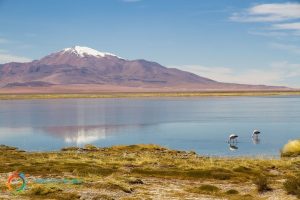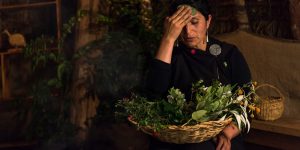Destionation Chile: An eco-experience with native flora
By: Chile Travel - 28 August, 2021
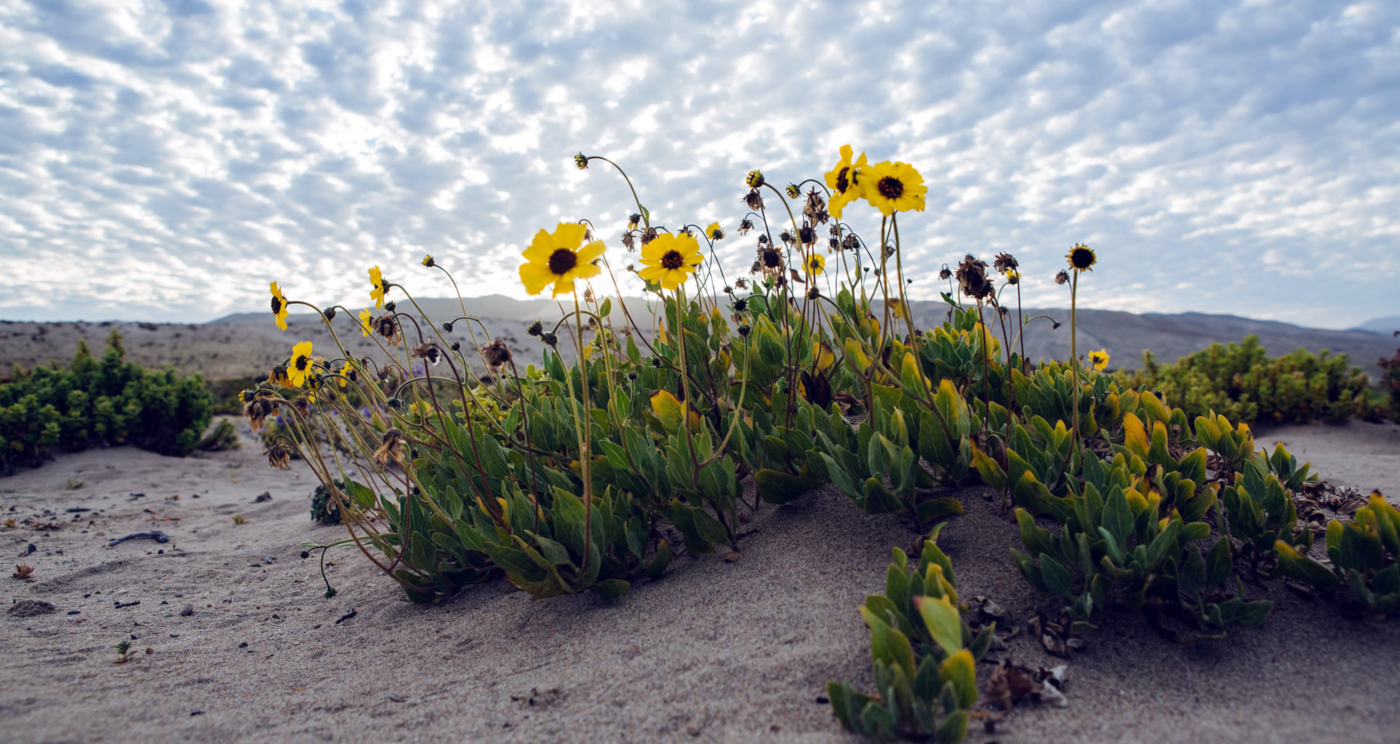
If you are a plant lover and would like to travel to Chile to discover its Native Flora, but without leaving a carbon footprint, you’re in luck because eco-tourism in Chile is happening. In fact, it’s a booming trend that attracts thousands of tourists year after year who come to visit Chile’s numerous Parks and Protected Areas.
Whether it’s for pleasure’s sake or in the name of science, if you’re the type of traveler that’s seeking an escapade into the wilderness, where you can appreciate the endemic botany of a place, then Chile is that place for you! The Native Flora and Native Forests in Chile have some of the richest and most unique sources of biodiversity in the world.
Various bio-geographic factors contribute to the richness and abundance of the varieties of native trees, flowers, cacti, ferns, fungi, lichens, and other plant species that are unique to Chile. We promise you will be AMAZED!
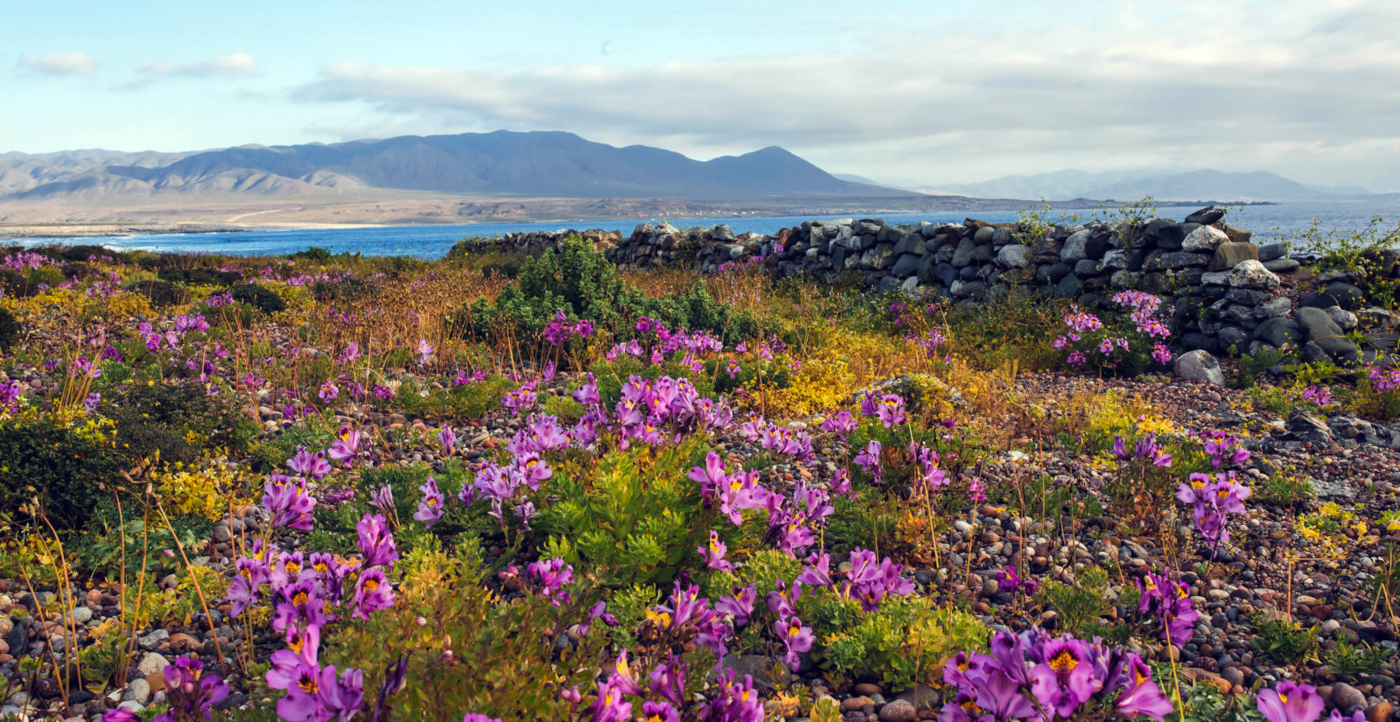
NATURE’S HOTSPOTS
Chile is one of the 35 biodiversity hotspots in the world and one of the richest floral regions on the planet. Geographically speaking, Chile has less than five percent of the world’s land area, however, it has around 7,000 native plant species from a total of 298.000 that exist in the world.
From the heights of the Andes Mountains to the coasts of the Pacific, going from the northern Atacama Desert to the southern wetlands of Patagonia, Chile leaves a life-lasting impression on those who visit because of its exuberant Native Flora.
THE FLOWERING NORTH
The great diversity of Native Flora that exists in the north of our country makes eco-tourism in Chile possible in an area of scarce rainfall, a distinctive characteristic of the world’s driest desert, the Atacama.
The Atacama Desert covers 105,000 km2, and for more than 300 years not a single drop of rain fell on its lands. Thanks to the “Niño Phenomenon” and the Humboldt current, a few times each decade rain falls in the desert and awakens from dormancy around 200 flower species, bringing back to life this unique natural phenomenon known as: The Flowering Desert.
In a place where one would never expect to see a rich plant life, you’ll be amazed to see the arid northern desert carpeted with typical Chilean flowers of every color.
The first species to flower in the desert is the “White Huilles” (Leucocoryne) and the “Añañuca Amarilla” (Rhodophiala bagnoldii). Extra color arrives in a second blooming phase with the notable “Guanaco paw” (Cisanthe grandiflora), different types of Alstroemerias, and the jewel of the desert known as “Garras de León” (Bomarea ovallei).
This immense floral garden can be observed in different parts of northern Chile, such as Huasco, Vallenar, Copiapó, Caldera and La Serena. The most recommended paths to explore are in Caleta de Hornos, Juan Soldado, Quebrada Honda, El Temblador beach close to La Serena, Totoral Bajo, Carrizal Bajo and Caleta Barco close to Vallenar.
In order to appreciate this marvel in all of its splendor, it’s best to head for the north at the end of September or the beginning of October, and in exceptionally rainy years like now in 2019, the desert is expected to flower months earlier.
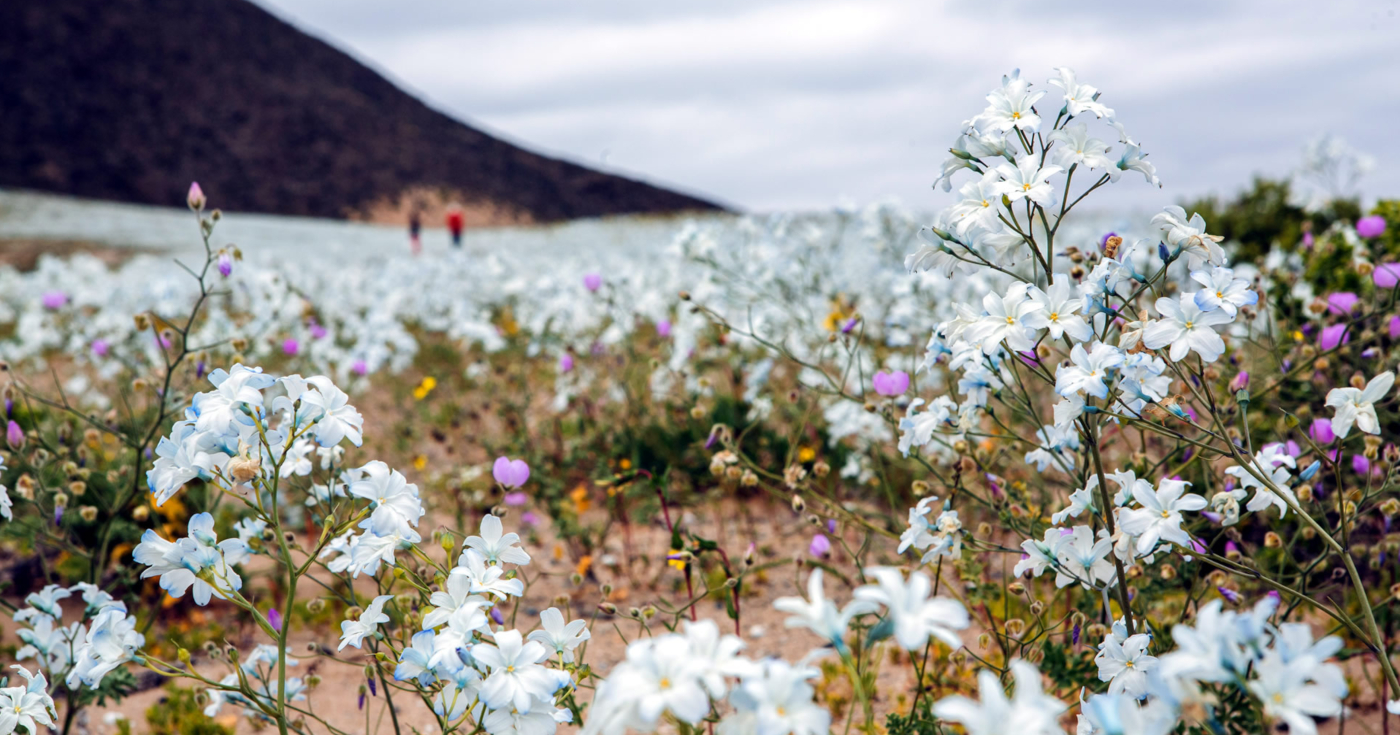
PARKS AND NATIONAL NATURE RESERVES
More than 20% of Chile’s national territory is part of a Park or Nature Reserve, whose objective is to care for the species of Native Flora and promote ecotourism in Chile as one of the best experiences in the world.
To take maximum advantage of the journey to the flowering north, one Must-See Los Flamencos National Reserve, located 104 km from Calama, where one can also see part of the flowering desert and evergreen species such as the Tamarugo (Prosopis tamarugo) and the white Carob tree or Algarrobo blanco (Prosopis alba). The Altiplano lagoons, Miscanti-Miñiques, and Chaxa, are in the Reserve, as well as the Moon Valley (Valle de la Luna) and Aldea Tulor.
The Pan de Azúcar National Park is located 30 km north of Chañaral. This is an incredible place that attracts visitors all year long due to its good weather and the diversity of its flora.
Here you will find yet another of the fascinating phenomena that occurs in the desert of northern Chile, known as “Camanchaca”. This ocean fog feeds the plants once it meets the costal elevations. You’ll see endemic species such as “Copao” (Eulychnias iquiquensis), “Lechero” (Euphorbia lactiflua) and “Chagual del Paposo” (Puya boliviensis) that dominates the landscape.
Another extraordinary destination for those who love botany and plan to enjoy ecotourism in Chile, is the unique Fray Jorge National Park. If you make it to the Limarí province, do your best to visit this rare ecosystem similar to that found in the southern Valdivian temperate rainforest, but geographically located in the Atacama Desert.
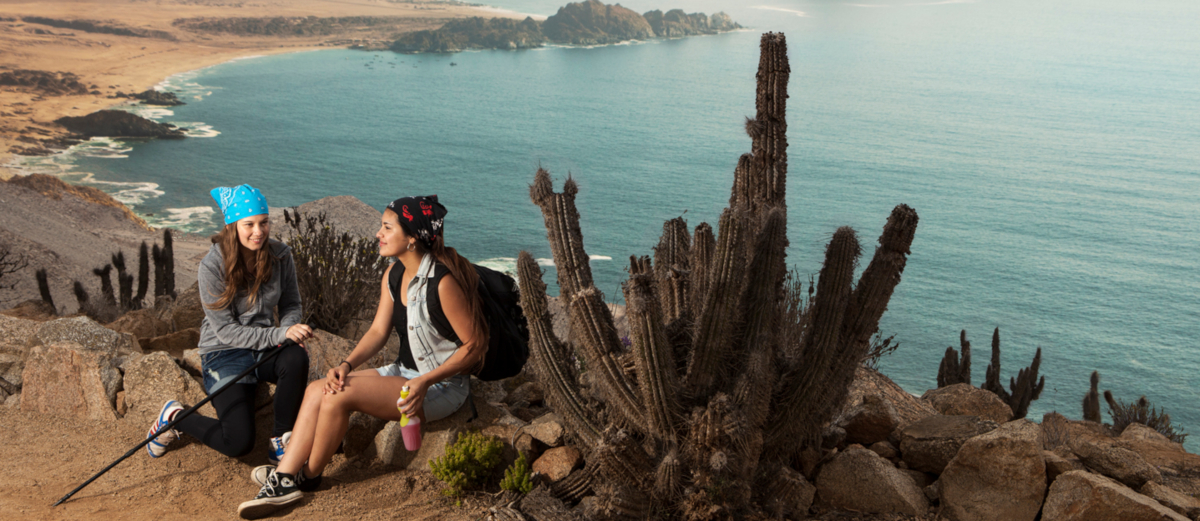
CHILEAN FLORA CHILENA FROM THE CENTRAL ZONE
As you travel from the north to the south of the country, the green color and abundance of vegetation will increase considerably, but in spite of what you would think, the diversity of plants is greater in the northern desert than in the lush south.
The ecosystems toward the south are more wide-ranging, consisting in large forested areas, that are equally enchanting for their natural beauty.
Thanks to its Mediterranean climate and fertile soils, central Chile is renowned for being one of the major contributors to the nation’s agriculture, especially fruticulture. “Maqui” (Aristotelia chilensis) is a native tree in the central-south of Chile which produces a super-fruit, with important health benefits.
One of the most important treasures from central Chile is the Chilean Palm tree (Jubaea chilensis) that breaks many records for being the southern-most and longest-living palm tree on the planet. It takes up to 60 years to bloom and can live for 1,000 years. It also has the thickest trunk in the world measuring 1.3 meters.
This endemic species is found in a small area of central Chile, especially at the La Campana National Park. This important biosphere reserve, 60 km from Valparaíso, has about 70,000 Chilean Palm Trees.
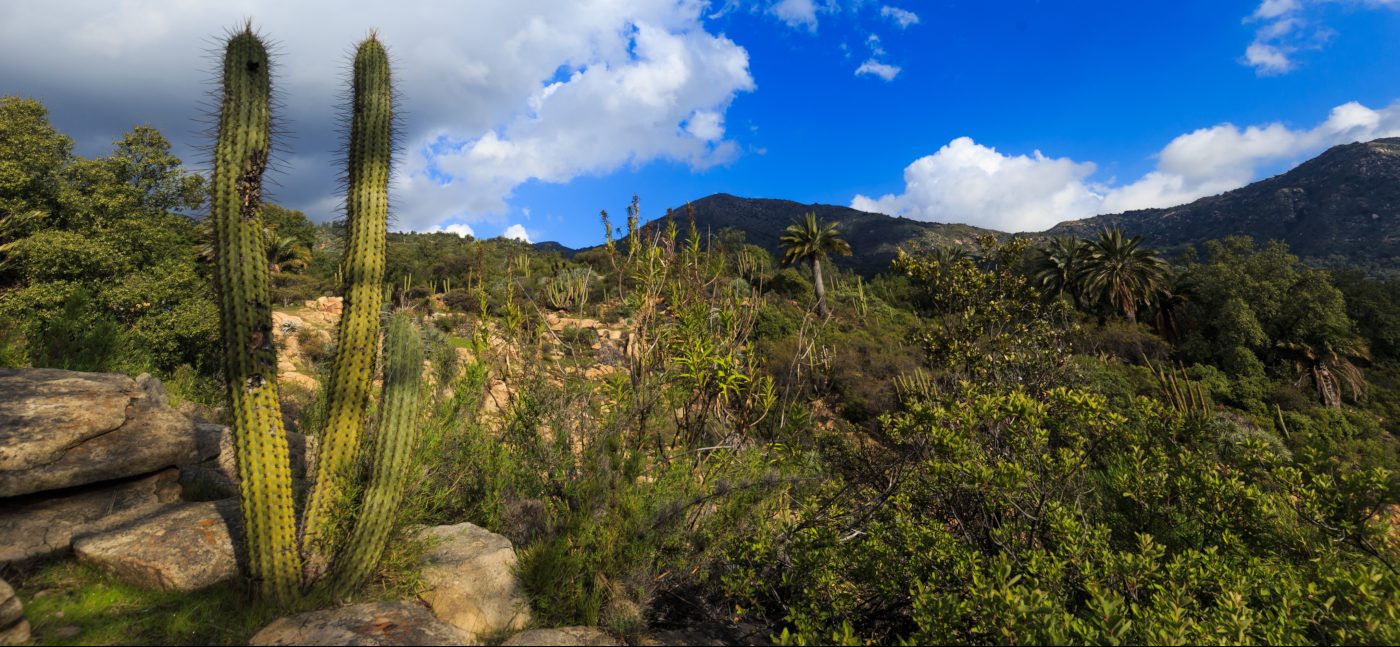
THE MAGIC OF THE SOUTH
The south of Chile is known for its magic native flora, where you can find one of the last temperate rain forests on the planet. This year Chile finalized the creation of its National Park Network, covering an area of 4.5 million protected hectares, equivalent to the size of Switzerland.
Species such as the thousand-year-old “Alerce” (Fitzroya cupressoides) or Lahuán that means “grandparent” in the language of the native people, the Mapuches. This is the tallest native tree in South America and the second longest living species in the world surviving more than 4500 years.
Another long-lived species that dominates in the southern forests of Chile is the “Monkey Puzzle Tree”, Araucaria or Pehuén (Araucaria araucana). This type of Chilean Pine tree, endemic to the sub-Antarctic forests, was declared a Natural Monument in Chile and is found it several National Parks such as Conguillío, Tolhuaca, Laguna del Laja, Huerquehue, Villarrica and the Nahuelbuta.
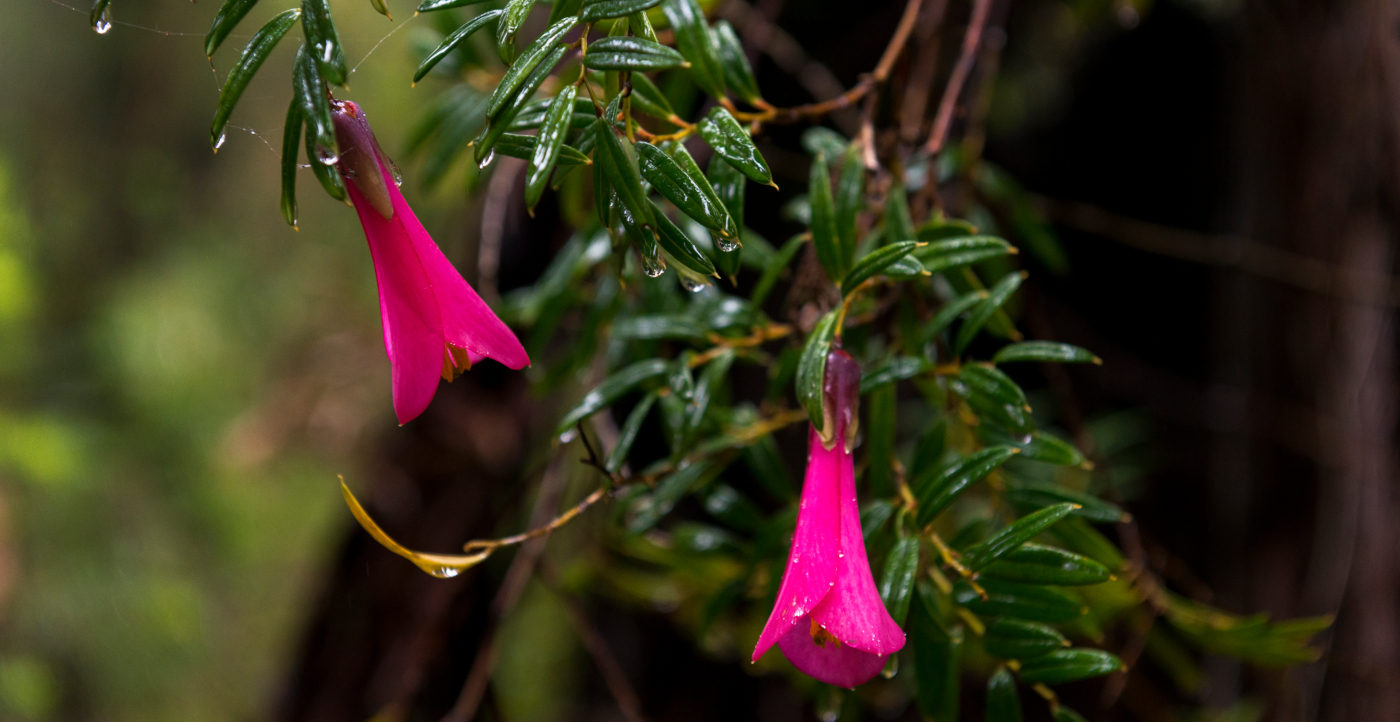
Chile’s national flower is the Copihue (Lapageria rosea) and it grows in the temperate forests of the central-southern region. This pretty little bell-shaped flower has inspired many Mapuche legends, such as the one that tells how it was named in honor of the tragic love story between two young Indians of rival tribes: Copih and Hue.
The Copihue can only be found in its natural habitat, in its characteristic red tone, sharing the land with many trees such as the Boldo (Peumus Boldus), Coihue (Nothofagus dombeyi), Lingue (Persea lingue), Quillay (Quillaja Saponaria), Ulmo (Eucryphia cordifolia) and others.
ECO-REGION VALDIVIAN TEMPERATE RAIN FOREST
The Valdivian temperate rain forest is one of the first forests that existed on Earth and today it stands out for its endemism, since a third of its species are only found in this region of the world: the extreme south of Chile.
It’s a destination of very friendly people who favor sustainable tourism. Here you’ll find a great number of open-air activities like trekking, horse riding, kayak and camping.
Alerce Costero National Park consists of 13,000 hectares of wilderness in a perfect place for the development of eco-tourism. Also, Lafken Mapu Lahual Park, is one of the parks in a network of parks belonging to the native people, with over 1,000 hectares of forests full of Alerces, Olivillo Costero and other native species.
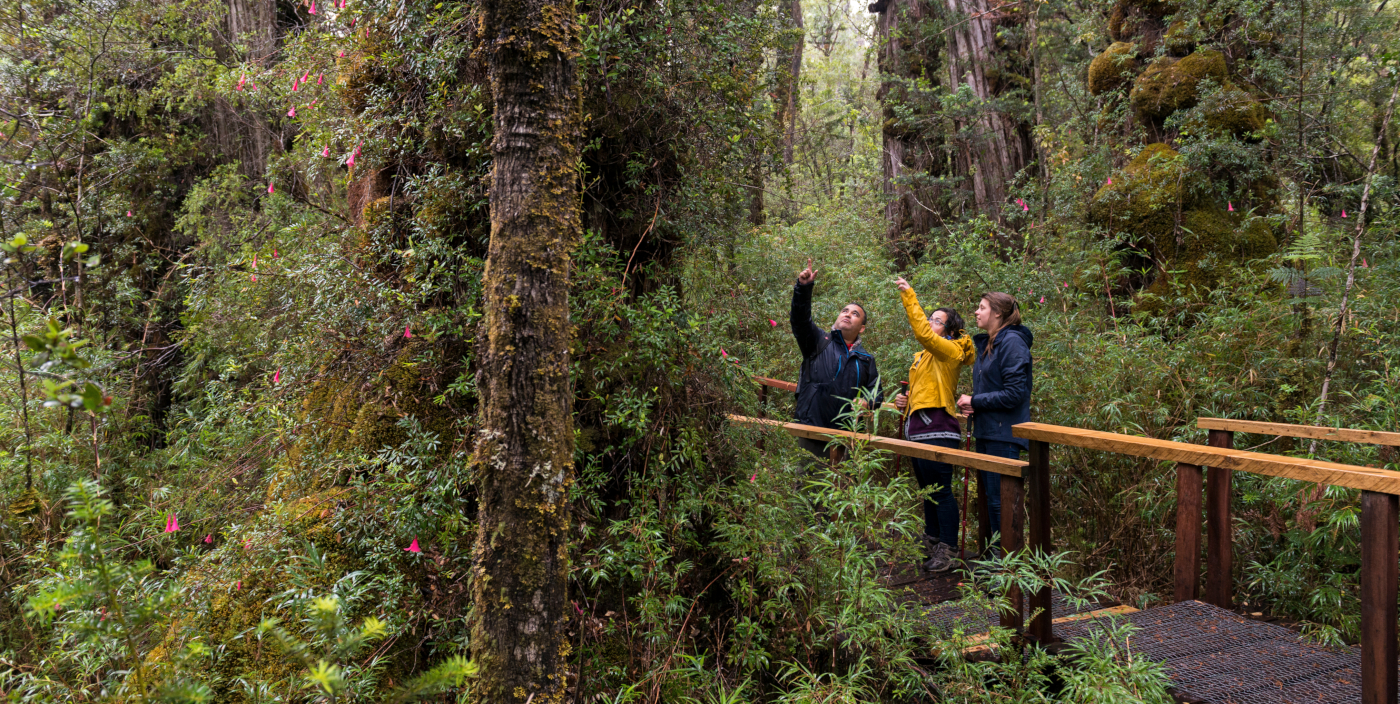
One of the country’s most important Nature Sanctuaries is Parque Pumalín. It was donated by a U.S. citizen named Douglas Tompkins, who was a conservationist committed to the preservation of biodiversity. The Park extends over 325,000 hectares of forest, mountains, rivers and lakes.
This true sanctuary of nature is ideal for practicing eco-tourism in Chile. Among the species thriving in this evergreen territory are the Arrayán (Luma apiculate), Tepa (Laureliopsis philippiana), Canelo (Drymis winteri), Tineo (Weinmannia trichosperma), Tiaca, Coigüe de Chiloé (Nothofagus nitida), Coigüe de Magallanes (Nothofagus betuloides), Ulmo and Mañio (Podocarpus nubigenus), in addition to the Ciprés de Guaitecas (Pilgerodendron uviferum).
Even further south, one finds the Torres del Paine National Park. One of the most important Biosphere Reserves in the world and one of the most popular destinations for nature lovers.
While hiking in the park, one can enjoy a great variety of native trees and plants, including the outstanding Notro (Embothirium Coccineum), Calafate (Berberis Microphylla), Armeria (Armenia Marítima) and Capachito (Calceolaria Uniflora).
All of this and much more are part of the native flora in Chile, where tourism and nature exist in harmony.
















